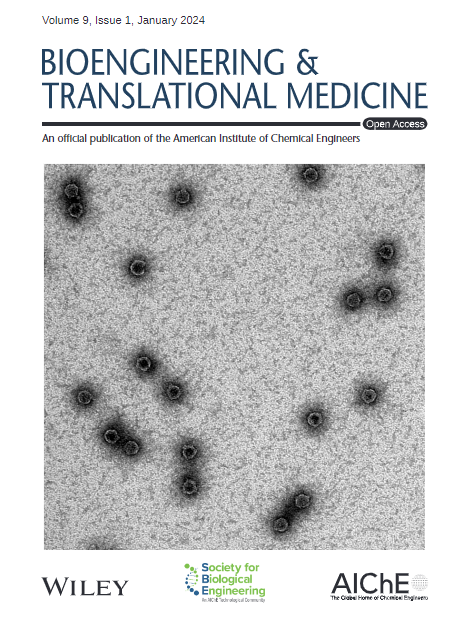Near Infrared‐light responsive chlorin e6 pro‐drug micellar photodynamic therapy for oral cancer
IF 5.7
2区 医学
Q1 ENGINEERING, BIOMEDICAL
引用次数: 0
Abstract
A major concern of conventional photodynamic therapy is its non‐specific toxicity due to off‐site drug accumulation. Micelles tend to localize the drug to the tumor site. However, rapid drug release at high concentrations from the micelles to kill the cancer cells remains a formidable task. In this manuscript, we have introduced the 2‐nitrobenzyl (2NB)‐moiety as the linker between mPEG and the photosensitizer, chlorin e6 (Ce6), to prepare the conjugate, mPEG(2‐nitrobenzyl)Ce6. We envision that 2NB as a linker between hydrophobic, Ce6, and hydrophilic mPEG would be more effective in releasing Ce6 by disassembling PEGylated 2‐nitrobenzyl chlorin e6 (mPNCe6) Ms. Characterization through Fourier transform infrared spectroscopy and近红外光响应氯e6药物前胶束光动力治疗口腔癌
传统光动力疗法的一个主要问题是它的非特异性毒性,这是由于体外药物积累造成的。胶束倾向于将药物定位到肿瘤部位。然而,从胶束中快速释放高浓度药物以杀死癌细胞仍然是一项艰巨的任务。在本文中,我们引入了2 -硝基苄基(2NB)片段作为mPEG与光敏剂氯e6 (Ce6)之间的连接剂,制备了共轭物mPEG(2 -硝基苄基)Ce6。我们设想2NB作为疏水性、Ce6和亲水性mPEG之间的连接剂,通过拆解聚乙二醇化的2‐硝基苄基氯e6 (mPNCe6),可以更有效地释放Ce6。通过将Ce6偶联到胶束的疏水核心,暴露在近红外光下显著加速了胶束的解离,促进了胶束内Ce6疏水成分的受控和快速释放。细胞摄取研究表明,Ce6偶联提高了Ce6的摄取。细胞活力实验表明,该制剂在激光照射下具有浓度依赖性的细胞毒性。经过激光照射的mPNCe6基团在细胞内产生了丰富的活性氧(ROS),并呈现出绿色的固体荧光,说明激光照射后mPNCe6胶束对Ce6的高效递送及其在细胞内良好的ROS生成能力。此外,对mo2c荷瘤小鼠的体内研究表明,肿瘤生长、肺转移和肿瘤区域的药物积累减少。所开发的纳米药物可能成为口腔癌的潜在治疗策略,最大限度地减少肺转移的发生。
本文章由计算机程序翻译,如有差异,请以英文原文为准。
求助全文
约1分钟内获得全文
求助全文
来源期刊

Bioengineering & Translational Medicine
Pharmacology, Toxicology and Pharmaceutics-Pharmaceutical Science
CiteScore
8.40
自引率
4.10%
发文量
150
审稿时长
12 weeks
期刊介绍:
Bioengineering & Translational Medicine, an official, peer-reviewed online open-access journal of the American Institute of Chemical Engineers (AIChE) and the Society for Biological Engineering (SBE), focuses on how chemical and biological engineering approaches drive innovative technologies and solutions that impact clinical practice and commercial healthcare products.
 求助内容:
求助内容: 应助结果提醒方式:
应助结果提醒方式:


